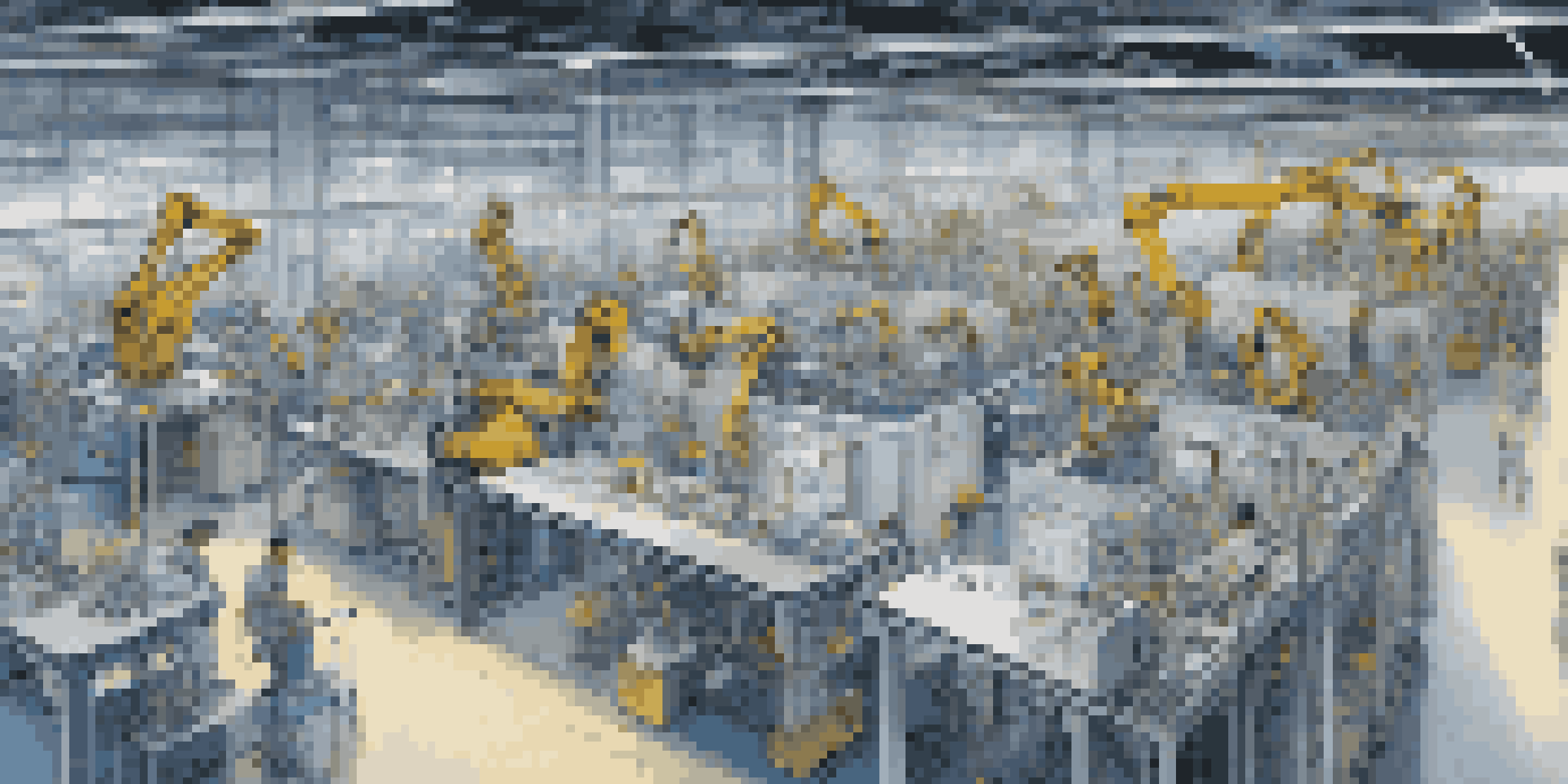The Role of Simulation in Cyber-Physical Systems Development

Introduction to Cyber-Physical Systems (CPS)
Cyber-Physical Systems (CPS) are integrations of computation, networking, and physical processes. They operate in real-time environments and rely on feedback loops between the physical and digital worlds. Imagine a smart thermostat that learns your schedule and adjusts the temperature accordingly—this is a simple example of CPS at work.
The future is already here — it's just not very evenly distributed.
These systems play a crucial role in various sectors, including automotive, healthcare, and manufacturing. They are designed to optimize performance and ensure safety in complex environments. As CPS become more prevalent, understanding their development is essential for fostering innovation.
This is where simulation comes into play, providing a testing ground for CPS before they are deployed in the real world. By simulating scenarios, developers can identify potential issues and improve system designs, ensuring that the final product meets the necessary standards.
The Importance of Simulation in CPS Development
Simulation allows developers to visualize and analyze how a CPS will operate in various situations. This is particularly useful for systems that are too dangerous or costly to test in real life, like autonomous vehicles. By creating virtual environments, engineers can experiment with different configurations and scenarios.

Additionally, simulation helps in understanding the interactions between the physical and digital components of a CPS. It provides insights into system behavior under various conditions, enabling teams to optimize performance and enhance safety measures. For instance, simulating a factory floor can reveal bottlenecks and inefficiencies that wouldn't be apparent in traditional testing.
Simulation Enhances CPS Development
Simulation allows developers to visualize and analyze Cyber-Physical Systems, optimizing performance and ensuring safety.
Ultimately, simulation reduces development risks and costs by allowing for thorough testing before deployment. This proactive approach can save time and resources while ensuring that the system is robust and reliable.
Types of Simulation Techniques Used in CPS
There are several simulation techniques employed in CPS development, each serving unique purposes. One common method is discrete-event simulation, which models system behavior at distinct points in time. This technique is particularly effective for analyzing systems with time-dependent processes, such as traffic flow.
Simulation is not just a tool for understanding; it is a way of thinking about the world.
Another popular approach is agent-based simulation, where individual entities (agents) interact within a defined environment. This method is great for studying complex systems, such as social behavior in smart cities or the interactions between various components in a smart grid.
Finally, continuous simulation focuses on modeling systems that change continuously over time, like the dynamics of a robotic arm. By using these techniques, developers can gain a comprehensive understanding of the systems they are working on, leading to better design and functionality.
Challenges in Simulating Cyber-Physical Systems
Despite its advantages, simulating CPS comes with its own set of challenges. One significant hurdle is the complexity of accurately modeling real-world phenomena. The more intricate the system, the more difficult it becomes to replicate its behavior in a simulation, leading to potential discrepancies between simulated and actual performance.
Another challenge is the need for high fidelity in simulations, which often requires extensive computational resources. Realistic simulations may demand powerful hardware and advanced software tools, which can be a barrier for smaller organizations or teams. This can limit the accessibility of effective simulation for all developers.
Diverse Simulation Techniques Exist
Various simulation techniques, such as discrete-event and agent-based simulation, provide unique insights into system behavior.
Lastly, integrating various simulation models into a cohesive framework can be daunting. Different teams may use different tools or methodologies, making it challenging to create a unified simulation environment. Collaboration and standardization are key to overcoming these obstacles and ensuring effective simulations.
The Future of Simulation in CPS Development
As technology continues to evolve, the role of simulation in CPS development is expected to grow. Advancements in artificial intelligence and machine learning could enhance simulation capabilities, allowing for even more accurate and responsive models. Imagine a CPS that can adapt its simulation based on real-time data—this is the future we're heading towards.
Furthermore, the integration of cloud computing can make simulation more accessible, enabling teams to collaborate and share resources seamlessly. This democratization of technology could lead to innovative solutions and improvements across various industries.
Ultimately, the future of CPS development will hinge on the effective utilization of simulation techniques. As we embrace more intelligent systems, the need for robust, adaptable simulations will be paramount in ensuring their success.
Case Studies: Successful Use of Simulation in CPS
One notable example of simulation in CPS is the development of autonomous vehicles. Companies like Waymo use advanced simulations to test their self-driving algorithms in millions of virtual scenarios, ensuring safety and reliability before hitting the roads. This extensive testing process has been crucial in building public trust in autonomous technology.
Another case can be seen in smart manufacturing, where companies utilize simulation to optimize production lines and reduce waste. By modeling different workflow scenarios, they can identify the most efficient configurations, ultimately saving costs and improving productivity.
Challenges in CPS Simulation
Accurately modeling complex systems and achieving high fidelity in simulations presents significant challenges for developers.
These case studies illustrate how simulation not only aids in development but also drives innovation across various sectors. By learning from successful implementations, other industries can adopt similar strategies to enhance their CPS designs.
Conclusion: Embracing Simulation for CPS Success
In conclusion, simulation plays a vital role in the development of Cyber-Physical Systems. It allows developers to analyze complex interactions, mitigate risks, and enhance system performance. As CPS continue to evolve, the importance of effective simulation techniques will only increase.
By embracing simulation, organizations can foster innovation and ensure their systems are ready for real-world challenges. The ability to simulate various scenarios before deployment not only saves time and resources but also contributes to safer and more efficient systems.

As we look to the future, it’s clear that simulation will remain a cornerstone of CPS development, helping us navigate the complexities of our increasingly digital and interconnected world.